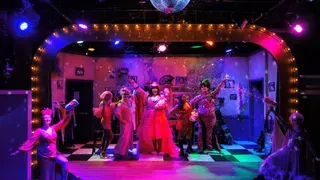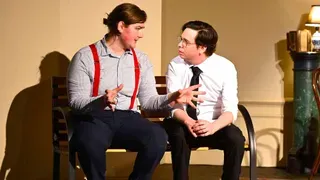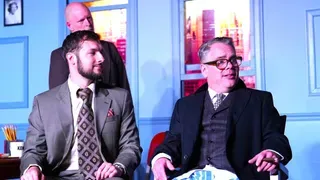March 28, 2011
Queer America - A People's GLBT History Of The United States
Roger Brigham READ TIME: 3 MIN.
Among the major obstacles confronting writers when they attempt to distill the last century of queer American history is one two-headed serpent: a dearth of public and accurate records for the first two-thirds of the century, and an overwhelming deluge of data with the dawning of the Information Age. Queer America: A People's GLBT History of the United States largely succeeds in outlining the challenges, prejudices, failures and victories of 20th Century American queerdom into one comprehensive reference.
Largely -- not completely.
Historian Vicki L. Eaklor opens with a summary of the historical, political and cultural background preceding 1900, then tackles the sporadic fits and starts of recognizing the diversity of human sexualities and the conflicting efforts to make the world either safe for such sexualities or rid of them entirely. She shows the interactions with broader evolving social and religious views on race, class and gender roles and the emergence of a coalescing queer consciousness as one of political context.
The early decades of American evolution into narrowly defined binary gender roles in the public and private sphere are covered in the opening chapters, leading up to the beginning of political and social organizations in the 1950s, the legal battles preceding and following Stonewall, and the dawning of political battles over military service and marriage by the close of the millennium.
But there is little life, little flesh and blood, in the opening chapters. Trends are reported rather than shown: it is hard to see envision faces and moments amid the dry data. In contrast, the post-Stonewall years are obliterated with an exhaustive repetition of every political and entertainment icon possible. And there is an irritating and inconsistent habit of having phrases inserted parenthetically into sentences.
Eaklor does provide discussion of some noteworthy themes such as the repeated fracturing of efforts along demographic lines, and the shift from "liberation" to "assimilation" efforts in the 1980s, and she suggests alternatives to New York;'s Stonewall Riots in 1969 for the start of the new "Gay Liberation," including the earlier Compton Cafe riot in San Francisco.
But there are some notable omissions and blind spots. For instance, she repeatedly notes through the early decades gay and lesbian efforts usually incorporate bisexual issues but not trans issues. But she never discusses when GLB became GLBT. And in her fixation with public celebrities in theater, film, television and politics, Eaklor fails to capture the far more numerous private lives and their other cultural and social expressions.
For example, sports. Lesbians in the 1980s, for example, we are told meet in churches, bars and musical festivals. Not a word about softball fields and LGBT events. Her discussion of sports starts and ends with a handful of out elite athletes and misses the exponential growth of LGBT participatory sports as an alternative to bar life that began in the early 1980s even as the AIDS crisis was unfolding.
Perhaps the most cryptic and debatable sentence in the book comes at the beginning of its discussion on AIDS: "The discovery of a new deadly disease quickly linked in the public mind to homosexuality could not have come at a worse time for gay men and lesbians in the United States." The book documents the decades of increased political and community activism preceding AIDS and the unified and energetic mobilization that followed, even as thousands were dying. It would be hard to fathom when our community could have ever weathered it better.
- - -
Queer America - A People's GLBT History Of The United States
Vicki Eaklor
March 15, 2011
The New Press
ISBN :: 9781595586360
Roger Brigham, a freelance writer and communications consultant, is the San Francisco Editor of EDGE. He lives in Oakland with his husband, Eduardo.






